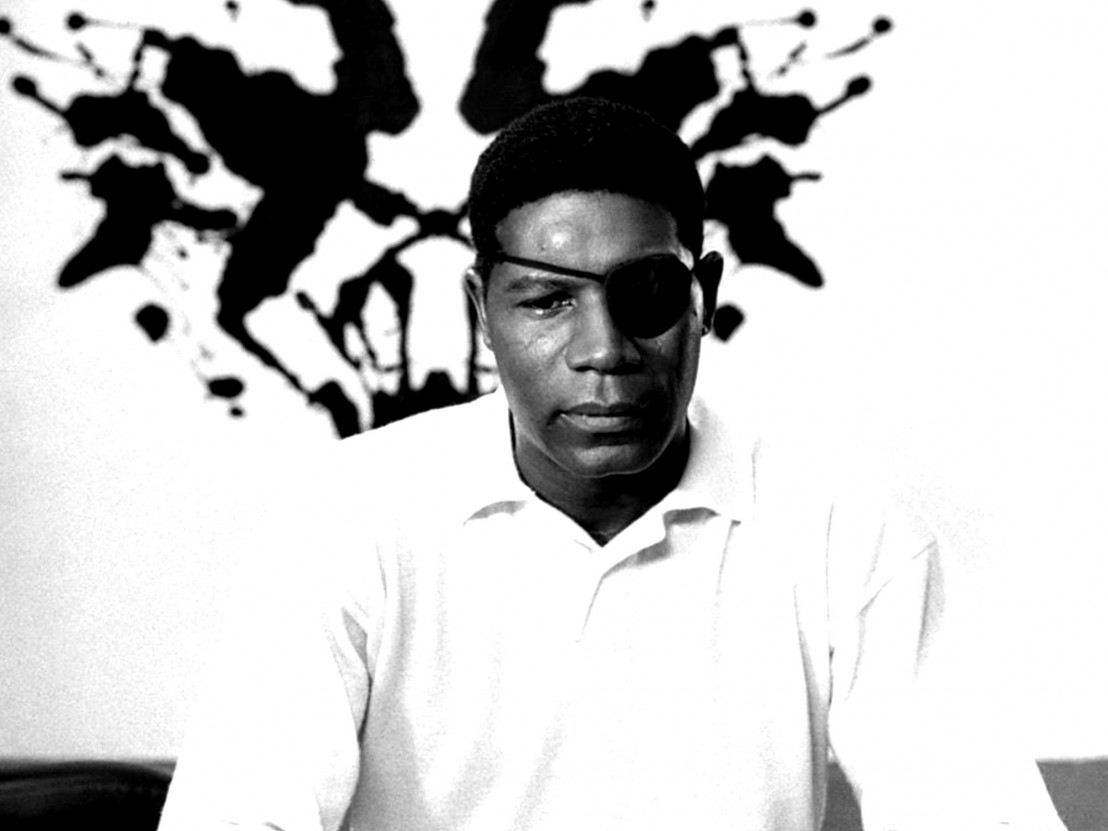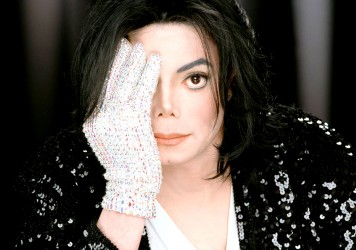
“How is it that we know who we are?” ask psychiatrist Dr Shinoda (Sab Simono) in voiceover at the beginning of Suture. As he continues to discuss the deeply ingrained sense of personal identity, remaining in place no matter how confusing or disorienting circumstances may be, and dislodged only by “a pathology called amnesia”, we are ourselves disoriented by a series of strange images (a black man with an eyepatch and rifle crouched waiting behind the curtain of an opulent shower as a white man approaches with a handgun) that have been wrenched from their contextualising history. This tense, armed confrontation between black and white is likewise presented in a crisp, retro monochrome, with the play of light and shadow and the stylised, canted angles all conjuring the language of film noir.
If that shower curtain evokes Alfred Hitchcock’s Psycho, coming with its own split personalities and divided narrative structure, then so too does the Phoenix setting of Suture – a film itself divided between two debut writers/directors, Scott McGehee and David Siegel. When Shinoda rewinds his narration, we flash back to the circumstances and events that led to this deadly show(er)down, and it is here that we are introduced to the film’s central, powerfully simple conceit.
Clay Arlington (Dennis Haysbert) is the long-lost half brother of Vincent Towers (Michael Harris), and while they are played respectively by a black and a white actor, the catalogue of differences (socioeconomic, cultural, temperamental, geographic) that exist between these estranged siblings with their distinct upbringings does not, within the film’s fiction, include race. On the contrary, we keep being told that their “physical resemblance is striking” – something on which, in this colour-blind, physiognomy-fudging world, Vincent is counting in his plot to kill Clay and to assume Clay’s identity as a way of beating the rap for the murder of their shared father, a superrich political magnate.
The problem is that Clay survives the ‘accident’ with his memory wiped and his broken face surgically reconstructed to resemble Vincent’s. Everyone believes that Clay is Vincent, including Clay himself, and the only things pointing to his true identity are strange dreams of needles and a poorer life – which is where Dr Shinoda comes in, as surrogate detective of a psychological mystery. Yet even as Clay, in becoming Vincent, must face the repercussions of Vincent’s past, he also finds himself enjoying the benefits of an affluent lifestyle he cannot remember ever having had before – even as buried histories, as is their wont, begin to resurface, leading inexorably to that climactic bathroom face-off (or Face/Off).
The film’s own identity proves just as hybrid, its beautiful early ’60s aesthetic (courtesy of DP Greg Gardiner – who won the cinematography award at Sundance for his efforts – and production designer Kelly McGehee) offset by the (crucial) presence of a ’90s carphone. For if the visual sensibilities of this film come from Out of the Past, it is also a neo-noir steeped in the post-Civil Rights identity politics of a much later time; and while it presents itself formally as a crime thriller, Suture is far more concerned with the sort of social schizophrenia explored by Hiroshi Teshigahara’s The Face of Another from 1966. In case one misses its Cartesian approach to the split identity of its characters, and of the divided nation in which it takes place, Clay’s plastic surgeon – and eventual lover – is actually called Dr Renée Descartes (Mel Harris), much as Clay’s own name suggests a character in the process of being moulded.
“There are triggers here,” Dr Shinoda says to Clay as he takes him around the home that in fact his patient has visited only once before. “Memory triggers.” Yet what we – unlike Shinoda or Clay – know is that soon there will be triggers of an altogether different kind being pressed in this starkly modernist building, chosen, as Vincent puts it, “for aesthetic reasons.” Whether it is the confused details of Clay’s dreams or the rapid responses that he gives in an association exercise with Shinoda, much in Suture comes with a double meaning to match its protagonist’s double identity – and even the title alludes not just to the surgical stitching that covers Clay’s face, but also to the (originally Lacanian) system of filmic grammar known as ‘suture‘ which serves to situate the viewer within the film as subject. For only we are privileged to appreciate the film’s many ironies and double entendres, and to unify the dual personalities that constitute Carl/Vincent – until, that is, the film’s joyfully cynical coda introduces yet another ludic equivocation between what is heard and what is seen.
Suture is a bold, confident debut that knows exactly what it is, and has a lot of fun letting its viewers reconstruct and reconcile its separated pieces. For here everything – and nothing – is black and white.
Suture is released on DVD and Blu-ray on 4 July 2016 courtesy of Arrow.
Published 4 Jul 2016

By Anton Bitel
Adam Schindler’s directorial debut Intruders offers a suspenseful blend of tragedy and trauma.

By Ashley Clark
The news that Joseph Fiennes, a white British actor, will play the King of Pop is as perplexing as it is insulting.

A previously lost film provides a fascinating insight into the actor’s unorthodox creative process.